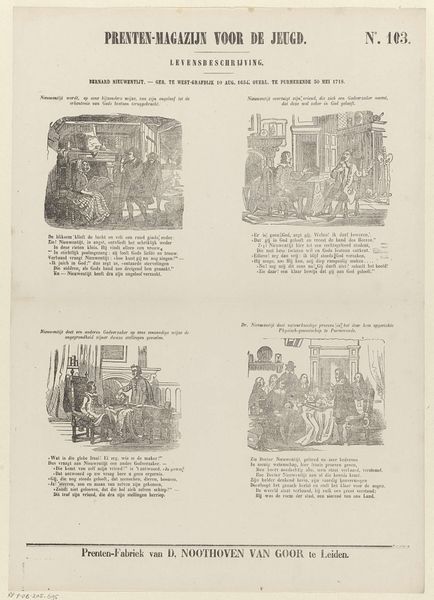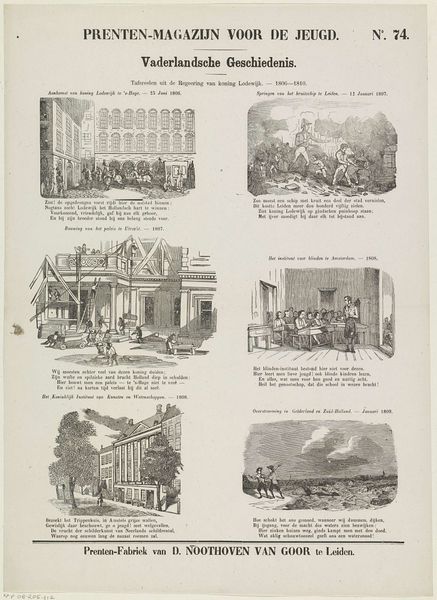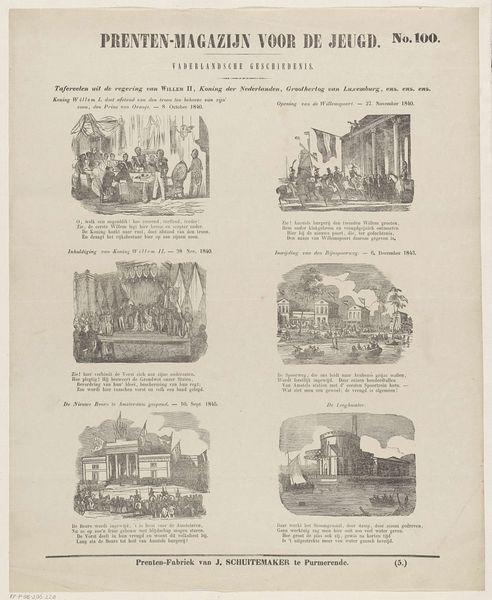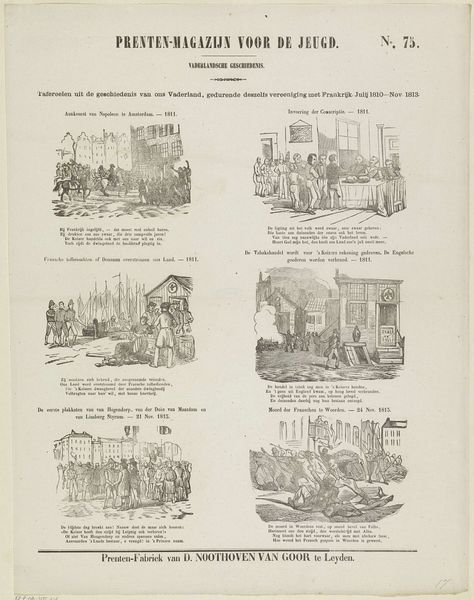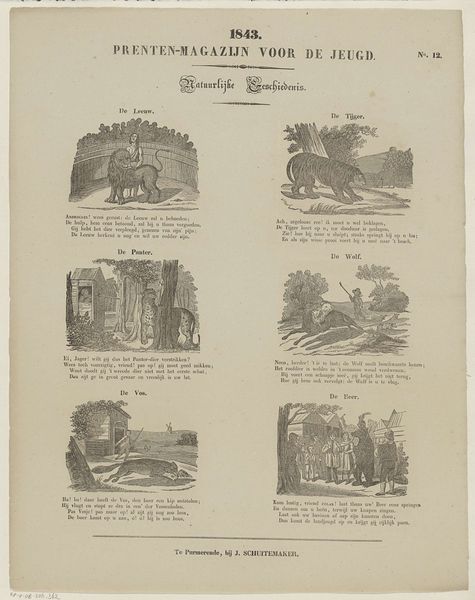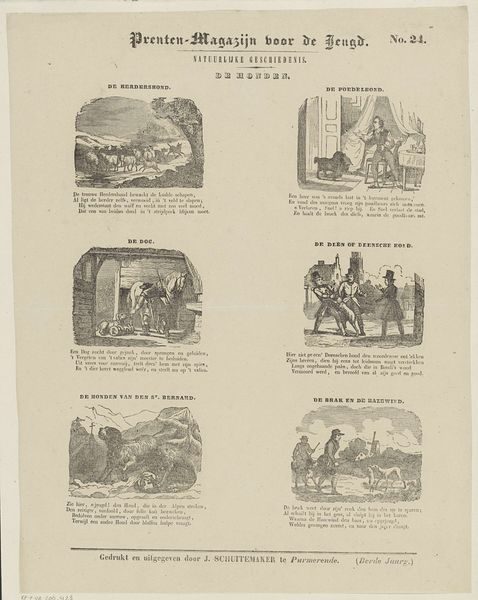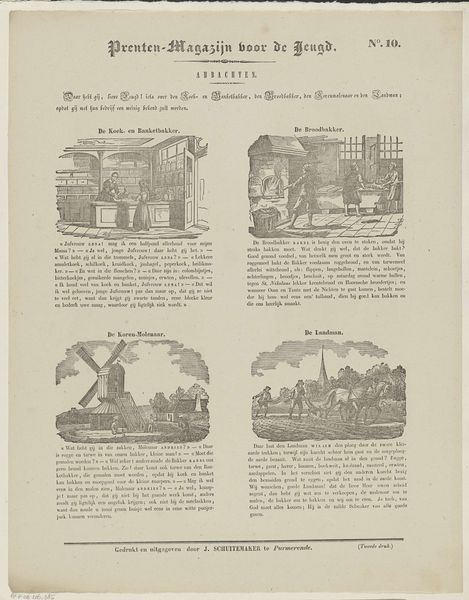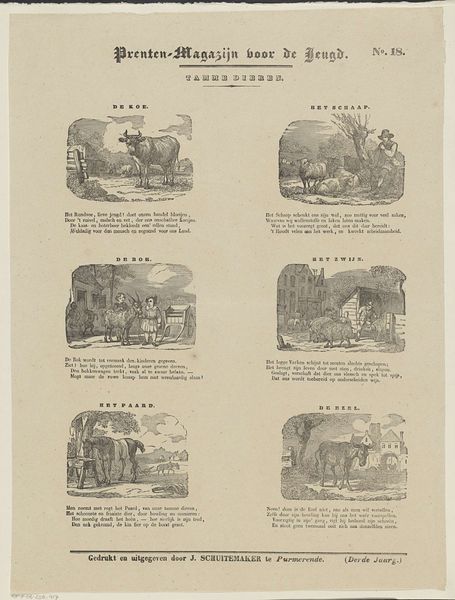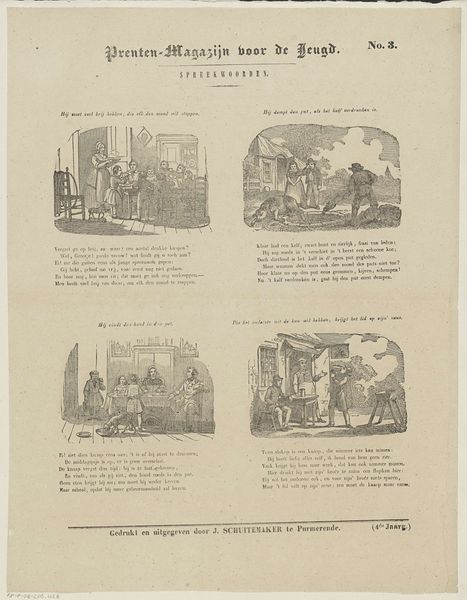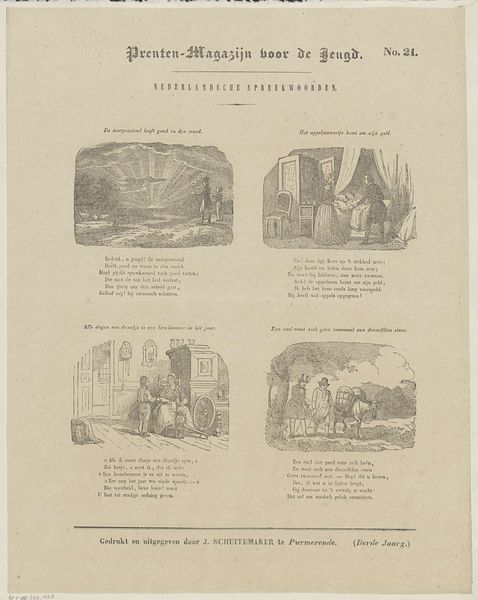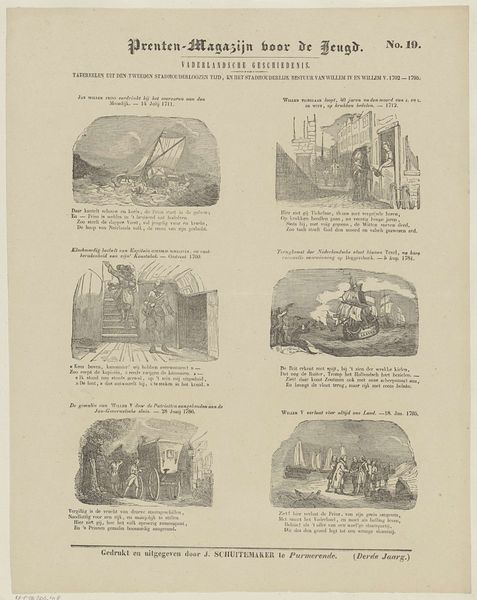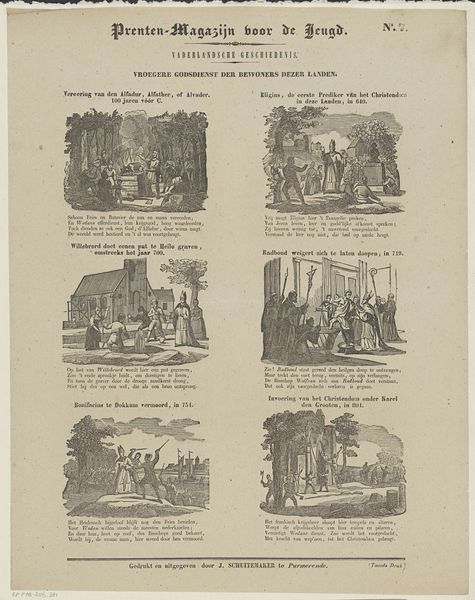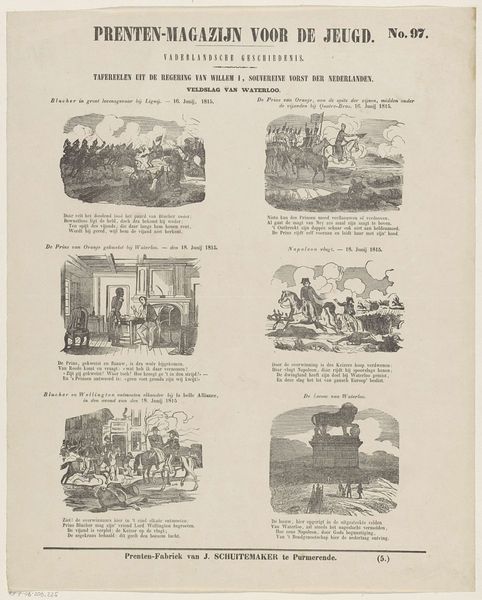
graphic-art, print, engraving
#
graphic-art
#
narrative-art
# print
#
history-painting
#
academic-art
#
engraving
Dimensions: height 430 mm, width 340 mm
Copyright: Rijks Museum: Open Domain
Editor: So, this is "Tafereelen uit de regering van koning Lodewijk," made around 1845 by Jan Schuitemaker. It’s a print, an engraving to be precise, depicting scenes from King Louis’s reign. It’s striking how this artwork presents multiple scenes in one sheet; almost like a comic strip. What historical context frames these visual stories? Curator: Indeed, this graphic-art gives us a fascinating glimpse into how history was disseminated and consumed. Produced in 1845, but referring to events from 1806-1810. Who do you think the intended audience for this piece was? Editor: Given the title "Prenten-Magazijn voor de Jeugd" – Magazine for Youth – probably children? Were these common teaching aids? Curator: Exactly. Prints like these served a pedagogical function, shaping young minds and instilling a particular view of Dutch history. Consider that King Louis, or Lodewijk Napoleon, was Napoleon Bonaparte's brother, briefly king of Holland. His reign was complex, viewed differently by various factions. Note how Schuitemaker chose to represent events of Lodewijk’s time. What values or ideas might the artist be trying to promote? Editor: Maybe ideas about national identity, and what was important during the rule of a king placed there by Napoleon? How he's portrayed feels really critical, even if I'm not sure whether that's positive or negative. Curator: Precisely. The scenes, the Leiden explosion, the care for the blind—reflect concerns about social order, compassion, and governance, issues hotly debated in that period, and how these resonate with a later Dutch identity being constructed through collective historical narratives. Schuitemaker offers a curated version for the youth. What’s more interesting about prints and magazines in this time period? Editor: It provides a fascinating perspective on the political lens applied to history during the 19th century. Curator: Agreed! And helps us appreciate how visual media shapes our understanding of the past even today.
Comments
No comments
Be the first to comment and join the conversation on the ultimate creative platform.
